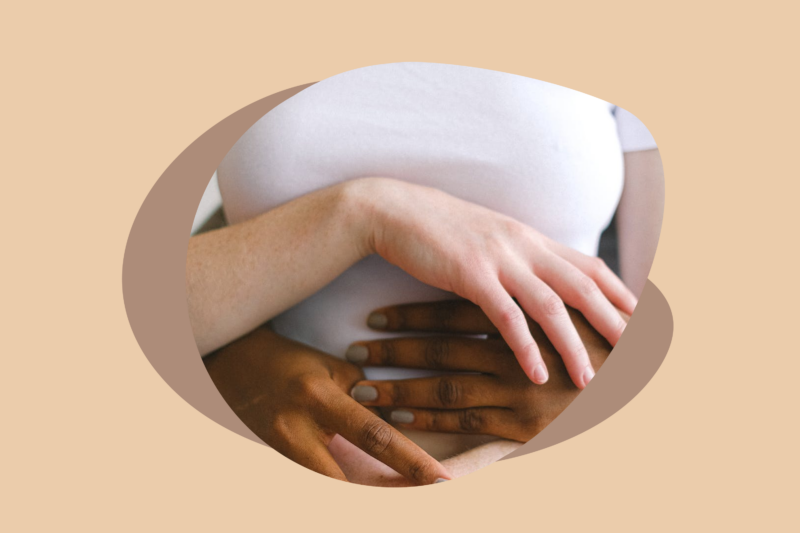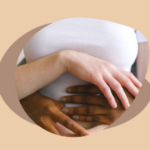How to Conceive Twins: Tips for When You’re TTC
Growing up, did you dream of giving birth to twins? Parents may want to give birth to twins for a number of reasons. For example, having twins means your babies are born with a sibling. The twin connection is known for being especially close, meaning your twins will have a friend for life.

If you’re trying to conceive (TTC), you might be wondering if you can influence your odds of having twins. In this blog post, we’ll talk about how common twins are, as well as how you can increase your chances of giving birth to twins.
It is important to note that a twin pregnancy can come with health risks for the mother and for the babies. Always seek the guidance of your doctor with any questions or concerns you may have regarding a twin pregnancy.
How common are twins?
Conceiving twins is uncommon, especially when there aren’t any outside fertility treatments or medication involved. The American Society for Reproductive Medicine (ASRM) says that about one in 250 pregnancies results in twins.
However, the rate of twinning has increased significantly due to two recent trends:
- The increase in popularity of fertility treatments
- The increase in women having children later in life
In fact, after 1980, the rate of twin pregnancies increased by over 75%!
There are two ways to conceive twins:
- Monozygotic twinning (identical) occurs when your twins develop from one zygote that splits to form two separate embryos
- Dizygotic (fraternal) twinning occurs when each originates from separate eggs, and the eggs are fertilized by their own sperm cell.
If you do have twins, they are more likely to be fraternal, or dizygotic, twins than identical twins. Fraternal twins make up approximately two-thirds of twin pregnancies.
Can you choose to have twins?
In some cases, you may be able to choose to have twins. If you are undergoing in-vitro fertilization (IVF), you and your doctor may decide to transfer multiple embryos at once to increase the chances of getting pregnant. Sometimes, this may result in a multiple pregnancy, such as twins or even triplets.
But before you hop on the phone with your doctor, it’s important to understand the risks associated with having twins. Multiple pregnancies are associated with higher risks for both the babies and the mother. For example, the majority of twins are born prematurely, and many are born with low birth weight.
Tips and methods for TTC twins
If, after weighing the risks, you still decide you want to have twins, there are both natural and medical ways to increase your chances of conceiving multiples. Here are some of the factors that determine whether or not you are able to have twins.
Conceiving naturally
While the odds of having twins are highest with fertility treatment, you can increase your odds of having twins naturally. If you are wondering how to conceive twins (or triplets) naturally, here’s what you need to know.
Family History/Demographics
If your family pedigree has a history of twins, then you may have a slightly higher chance of it happening to you. Having a history of twins on your mother’s side appears to increase your chances more than a history of twins on your father’s side, although this only applies to pregnancies occurring without fertility treatments.
Being a twin also appears to significantly increase your odds of giving birth to multiples. The average woman’s odds of giving birth to twins naturally are 1 in 250 — but for women who are fraternal twins themselves, the odds are 1 in 60. Men who are fraternal twins have slightly higher odds as well, conceiving twins in 1 in 125 births.
It’s a common myth that twins may skip generations. This means that you could potentially give birth to twins if one of your grandparents did, but there is limited evidence to support this claim.
Other demographic factors, such as race and ethnicity, may also impact your odds of having twins. Research conducted by Radboud University and Oxford University scientists discovered that the home of the highest rate of twin-births is Africa. According to the ASRM, in the United States, Hispanic women are the least likely to give birth to twins, compared with white and Black women.
According to the Office on Women’s Health, age may also play an important role: women over 30 have a higher chance of conceiving twins. This is because women over 30 are more likely to release more than one egg each month during their reproductive cycles, increasing the odds of fertilizing fraternal twins.
You may even be more likely to conceive twins if you have recently had another baby yourself. In 2017, research from the Department of chemistry at Touro College discovered that women who were breastfeeding during the time they got pregnant had a higher chance of conceiving twins. However, there aren’t many additional studies that support this research. Breastfeeding is not considered a reliable factor in increasing the likelihood of having twins.
Diet & health
Research from the ASRM reports that non-identical twins are more common in taller and heavier women, compared to women with a smaller body frame. There’s no certain reason for this correlation, but it could possibly be related to nutrition. Women that are bulkier may have more bodily resources available for their developing fetuses.
Unless you are underweight, you do not necessarily need to gain weight to increase your odds of conceiving twins, though proper nutrition can help. Unhealthy eating habits can harm your fertility, so keeping a healthy diet can help you conceive.
If you are TTC, pay special attention to the types of fats you eat. An observational study linked high trans-fat, and low unsaturated fat diets with infertility. Consuming trans fats over healthier monounsaturated fats could increase the risk of ovulatory infertility risk by 31%.
The diet of your male partner could affect your male partner’s fertility as well. Research suggests that men can benefit from adding antioxidants into their diet to help promote sperm health. Antioxidants are micronutrients that can be found in nuts, grains, vegetables, and fruits.
Conceiving with treatments
The most reliable way to increase your odds of having twins is to conceive using in-vitro fertilization (IVF) or other fertility treatments. This option is best if you are struggling with infertility, or the inability to conceive naturally within one year (or six months for women over age 35).
IVF
According to the ASRM, the use of fertility treatments is the leading factor that increases the chance of conceiving twins. In-vitro fertilization (IVF) is one such fertility treatment, where a medical professional extracts eggs and fertilizes them using your partner’s or a donor’s sperm in a lab. If the fertilization is successful, the embryo is transferred back into your womb.
Healthcare professionals may transfer more than one embryo into the womb to increase the chances of success. You may have twins if both of these embryos are successfully implanted and mature. However, because multiple pregnancies carry risks, guidelines state that women under 35 without additional risk factors should only have one embryo transferred at once.
Fertility drugs
Other fertility treatments involve the use of medication to stimulate the production of mature eggs by the ovaries. This includes the well-known fertility medication Clomid.
Fertility medication causes the ovaries to release two or more eggs in the same cycle. If both eggs are fertilized by sperm, you could potentially conceive fraternal twins.
What are your odds to conceive twins?
Even if you do everything you can to promote the conception of twins, there’s always a chance you still might not be able to conceive multiples. So, how common are twins really — and what are your odds of having them? Read on to find out.
Chances of having twins after 30
Your odds of having twins are higher if you are over age 30, since being older increases the odds that your ovaries will release multiple eggs in the same cycle. By age 35, white women are three times more likely to conceive twins and African-American women are four times more likely to conceive twins. However, it’s also worth noting that women over 40 who conceive twins may be at an especially higher risk of certain complications.
Chances with treatments
About 40% of twin births owe to the use of fertility treatments such as IVF, as do 77% of triplet and higher-order births. Usually, this is due to the fertilization of multiple eggs when using fertility drugs or the transplantation of multiple embryos during IVF. However, assisted reproductive technology (ART) practices are changing, making it less likely that your doctor will transfer multiple embryos during the procedure.
Chances of conceiving twins naturally
It’s estimated that 1 in 250 natural conceptions results in twins. However, your odds of conceiving twins naturally may be higher if you have a history of twins in your family. A 2016 study found that two genes, in particular, are strongly linked to higher odds of conceiving twins. Having one copy of each gene increases a mother’s odds of having twins by 29%. The more copies of the gene you have, the more likely you are to conceive twins.
Where to start if you’re interested in conceiving twins
Planning for twins must be done proactively and the first step should be a consultation with your doctor. Everything from your age to your family history will need to be evaluated and working together will be imperative to increase your chances of success.
Many women will start by pursuing natural tactics while others may opt for treatments and drugs – there is no single path for everyone and getting a comprehensive look at your overall health is the first step in that journey.
Mira’s Editorial Process
All content produced by Mira meets stringent editorial standards, ensuring excellence and accuracy in language and medical precision. Every piece undergoes thorough fact-checking and review by qualified professionals. Check out our full editorial process to learn more.










